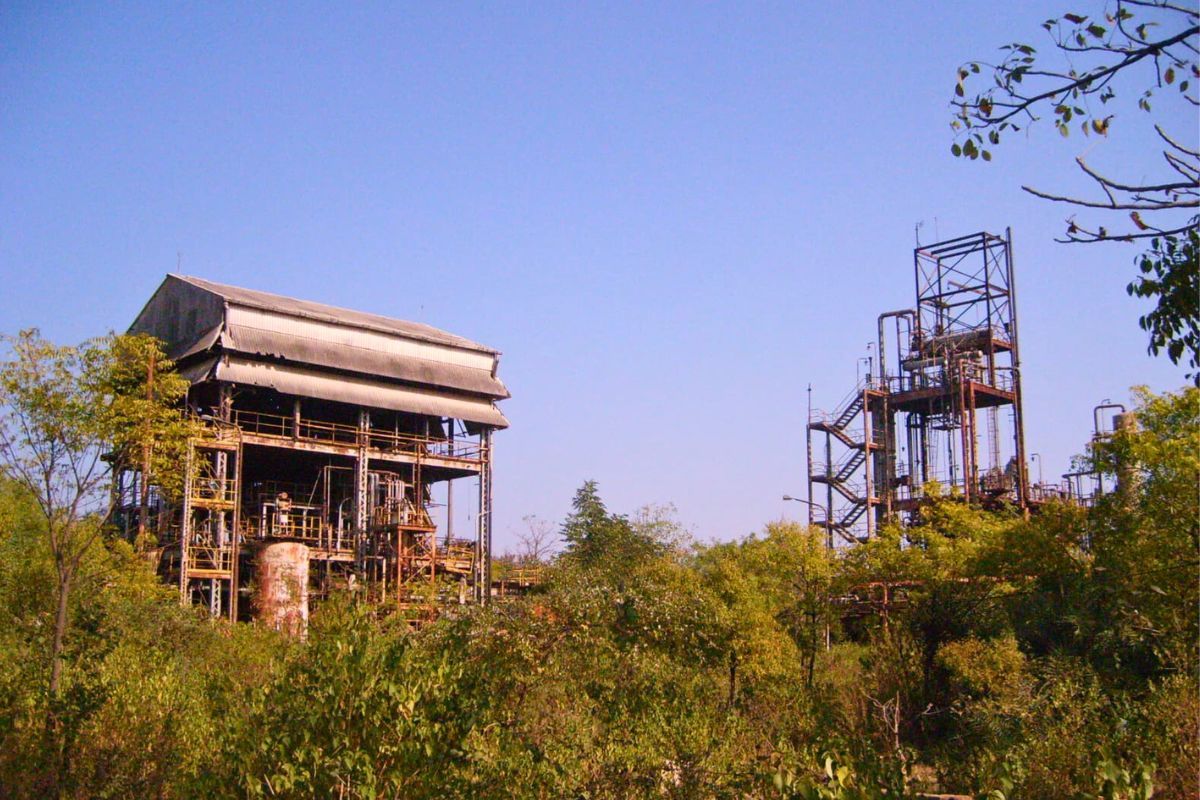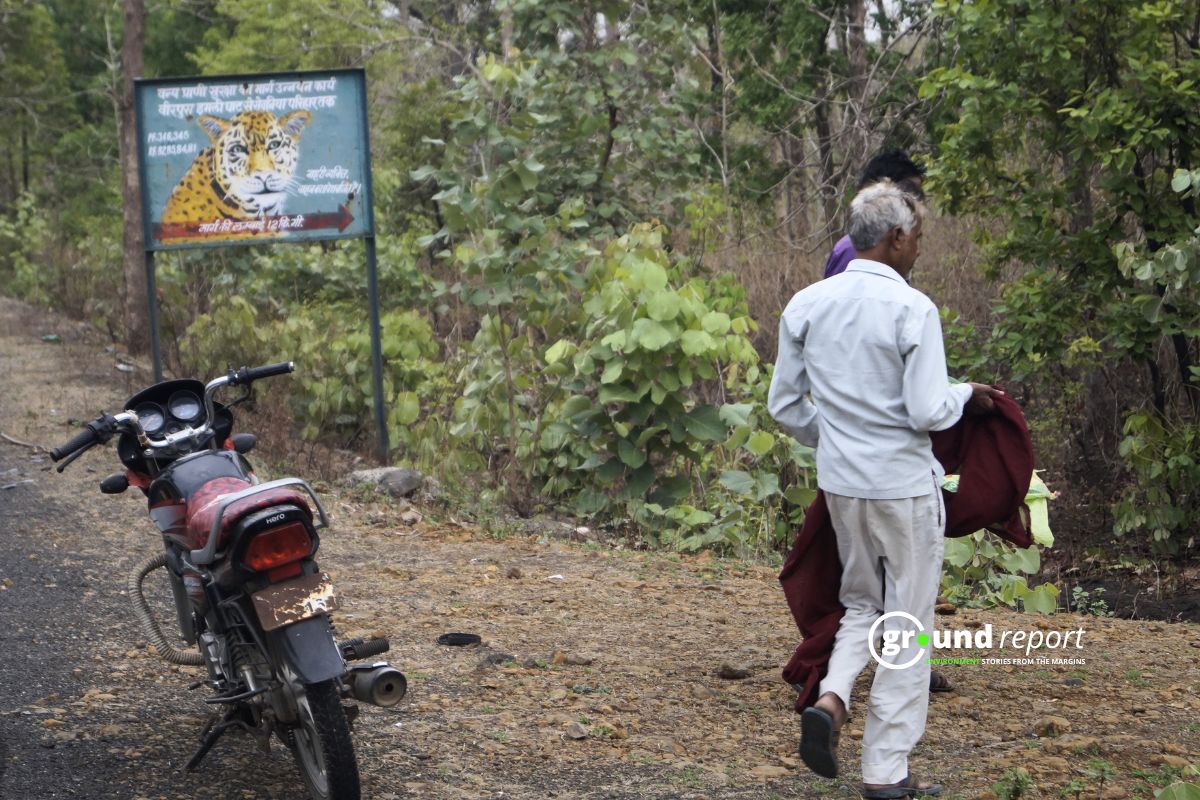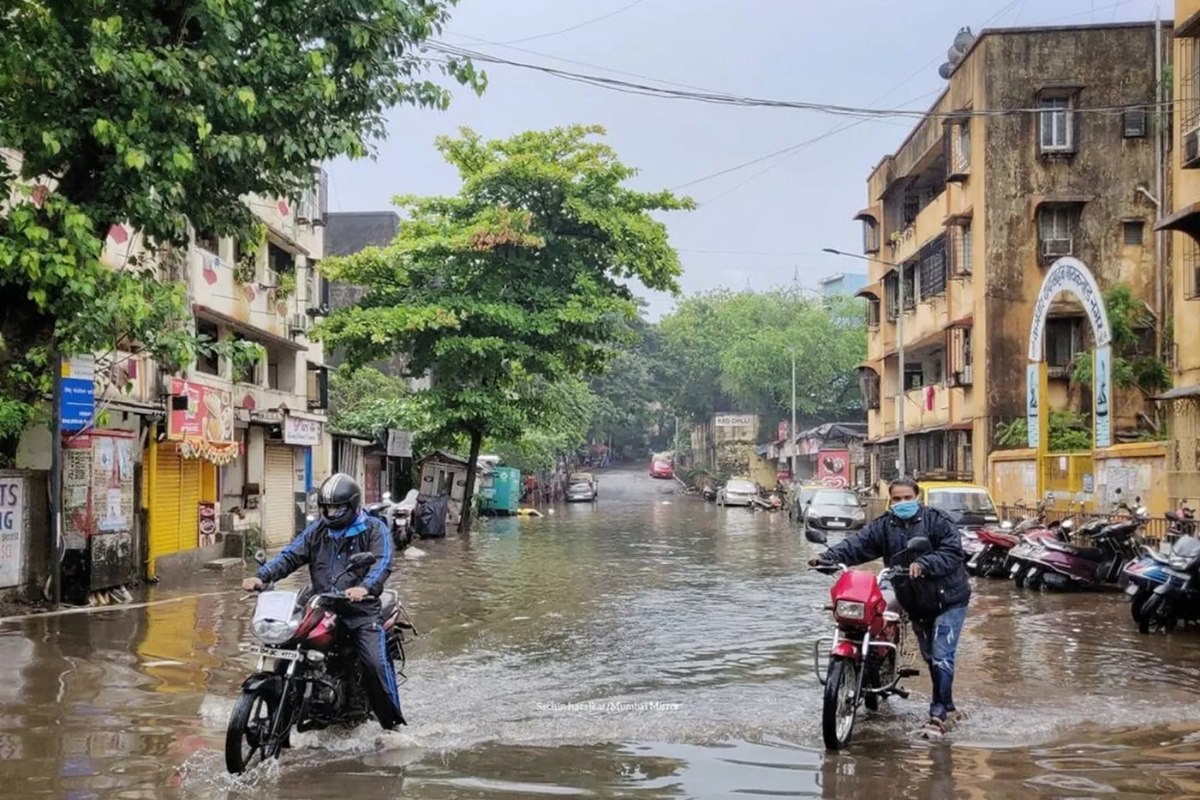Four decades have passed since the Bhopal gas tragedy, and its toxic legacy still remains a major environmental concern for India. The disposal of hazardous waste from the Union Carbide factory was delayed for a long time. But in 2025, it was transported to the garbage disposal centre built in Pithampur in Dhar district. This waste has been incinerated first. Now preparations are underway to bury the ashes of this burnt waste in a secured landfill. But while on the one hand this step is being considered an important initiative towards the management of toxic waste, there are also many important concerns related to it.
From Incineration to Landfill
In January this year, 358 tonnes of toxic waste from Bhopal’s Union Carbide factory was sent to Pithampur amid special security arrangements. Here it was burnt in the incineration plant at a temperature of more than 1,000 degrees Celsius. First, trials of this incineration were conducted, then it was carried out in several stages. Finally, by the end of June, all this waste had gone through the burning process. According to a report in the Hindi newspaper Dainik Bhaskar, after this entire process, about 850 tonnes of ash have been produced. Which is planned to be dumped in the landfill site.

The High Court of Madhya Pradesh has asked the Madhya Pradesh Pollution Control Board (MPPCB) on 31st July to submit a plan for the disposal of ash in a landfill within the next four weeks. Once the High Court gives the green signal, work will begin on it.
The ash will be sealed in leak-proof bags and placed in a special landfill of 2,500 square metres in Pithampur. The most important thing is that this landfill will not be dug underground but will be built above the ground. The site will be protected with multiple layers of plastic, sand, soil and grass, and according to officials, it will be kept under constant surveillance for the next 30 years. The site is expected to be ready by October, reports Deccan Chronicle.
Although Secure Landfill The concept of incineration is not new. It was adopted in the 1970s after major environmental crises in the US. It consists of a multi-layer liner, a leak arrestor and a leachate collection system. Today it is used worldwide for wastes that cannot be completely destroyed by incineration or chemical processing.
Creating a safe landfill is not just a process of digging a pit. Crores of rupees are spent on its construction, operation, monitoring and maintenance. A large area of land is required for this, which cannot be used for any other purpose for decades. Also, there is always a risk of accidents while transporting toxic waste from one place to another.
Experts caution that landfills are not a permanent solution. Over time, protective liners may degrade, monitoring systems can fail, and poor maintenance can turn these sites into fresh sources of pollution. Social worker Rachna Dhingra raises a critical point: no matter where you dump hazardous waste, leakage is inevitable — if not today, then eventually. Moreover, there are limits to how much toxic waste can be safely disposed of.
According to experts, there is no single solution for hazardous waste. Chemical treatment may neutralise toxic elements, but it also creates new waste. Solidification or stabilisation techniques seal the ash in cement or plastic, but this is only a temporary control. Biological treatment is effective on some organic toxins but ineffective on heavy metals. Injecting liquid waste into deep wells is also a method, but it is only for liquid waste.
All these methods have their limitations. Sometimes the cost is very high; sometimes long-term safety is not guaranteed. This is why even after incineration, a large amount of ash has to be safely disposed of.
Other than this Combustion There is also a risk of air pollution during the process. Incomplete combustion can produce toxic emissions such as dioxins and furans. Although the operators of the Pithampur project claim that the process was pollution-free, environmental experts and social workers do not believe so. Social activists say that heavy metals are still present in the ash.
Answers or More Questions?
The 850 tonnes of ash generated has raised serious concerns. Social activist Rachna Dhingra questions the entire process and tells Ground Report, “The issue is that the original 300 metric tonnes of waste has tripled in its volume after the incineration process, and this ash is loaded with heavy metals. If the waste had been stored safely in containers, the damage might have been far less. But by incinerating it, not only has the volume increased, but local communities have now been directly exposed to toxic materials.”
For example, according to the chemical theory of ‘chemical mass balance‘, it is not possible for 850 tonnes of ash to be formed after burning 358 tonnes of chemical waste. In the incineration process, some part of it turns into gas and goes into the air, due to which the weight of the ash is less than the waste.
Speaking to Ground Report, a Bangalore-based chemistry researcher who requested anonymity criticized the process, saying, “From 358 tonnes of waste, the expected ash residue should be between 72 and 125 tonnes, that’s a typical mass ratio of about 2.4:1. The figures being reported don’t add up and seem hastily fabricated.”
Ash mainly consists of substances that cannot be burnt. If the ash appears to weigh more than the waste, it could mean that there is some other substance mixed in it, there is a measurement error or a reporting problem. In general, ash cannot weigh more than the waste. None of the reports in the public domain have a clear answer to all these possibilities, and the fact that three times more ash was produced from burning garbage still remains a question mark.
If media reports are to be believed, then this ash contains heavy metals like nickel, zinc, chromium, lead, cobalt, copper, manganese and mercury. If these chemicals leak in the future, then this area can face many types of pollution and dangers. Dhingra says, “The reality is that the place where this garbage (leftover ash) is planned to be buried is not even 50 metres away from the population. The court is also not satisfied with this proposal, so it has asked the government for a new plan within four weeks.”
Dhingra says that this plan is not free from dangers. According to Dhingra, effective technology for disposal of such (residue) waste has not yet been developed in India. It would have been best if this waste was taken to America. If the waste could not be sent to America, at least it could have been left in containers. But this did not happen in Madhya Pradesh. Dhingra further says, “We will demand from the High Court that an impartial expert committee be formed to investigate the potential danger from this disposal. Our only hope is from the court. Justice is possible only if the court strictly implements the “Polluter Pays Principle” and gets Dow-Union Carbide to clean up. It will also have to be ensured that taxpayers’ money is not wasted.”
The Bhopal gas tragedy remains relevant even decades later. Even after forty years, the disposal of Union Carbide’s waste continues to raise questions. In this context, it is crucial that the investigation and the process are carried out fairly and carefully.
Four decades have passed since the Bhopal gas tragedy, and its toxic legacy still remains a major environmental concern for India. The disposal of hazardous waste from the Union Carbide factory was delayed for a long time. But in 2025, it was transported to the garbage disposal centre built in Pithampur in Dhar district. This waste has been incinerated first. Now preparations are underway to bury the ashes of this burnt waste in a safe landfill. But while on the one hand this step is being considered an important initiative towards the management of toxic waste, there are also many important concerns related to it.
From Incineration to Landfill
In January this year, 358 tonnes of toxic waste from Bhopal’s Union Carbide factory was sent to Pithampur amid special security arrangements. Here it was burnt in the incineration plant at a temperature of more than 1,000 degrees Celsius. First, trials of this incineration were conducted, then it was carried out in several stages. Finally, by the end of June, all this waste had gone through the burning process. According to a report in the Hindi newspaper Dainik Bhaskar, after this entire process, about 850 tonnes of ash have been produced. Which is planned to be dumped in the landfill site.
The High Court of Madhya Pradesh has asked the Madhya Pradesh Pollution Control Board (MPPCB) on 31st July to submit a plan for the disposal of ash in a landfill within the next four weeks. Once the High Court gives the green signal, work will begin on it.
The ash will be sealed in leak-proof bags and placed in a special landfill of 2,500 square metres in Pithampur. The most important thing is that this landfill will not be dug underground but will be built above the ground. The site will be protected with multiple layers of plastic, sand, soil and grass, and according to officials, it will be kept under constant surveillance for the next 30 years. The site is expected to be ready by October, reports Deccan Chronicle.
Although Secure Landfill The concept of incineration is not new. It was adopted in the 1970s after major environmental crises in the US. It consists of a multi-layer liner, a leak arrestor and a leachate collection system. Today it is used worldwide for wastes that cannot be completely destroyed by incineration or chemical processing.
Creating a safe landfill is not just a process of digging a pit. Crores of rupees are spent on its construction, operation, monitoring and maintenance. A large area of land is required for this, which cannot be used for any other purpose for decades. Also, there is always a risk of accidents while transporting toxic waste from one place to another.
Experts caution that landfills are not a permanent solution. Over time, protective liners may degrade, monitoring systems can fail, and poor maintenance can turn these sites into fresh sources of pollution. Social worker Rachna Dhingra raises a critical point: no matter where you dump hazardous waste, leakage is inevitable — if not today, then eventually. Moreover, there are limits to how much toxic waste can be safely disposed of.
According to experts, there is no single solution for hazardous waste. No. Chemical treatment may neutralise toxic elements, but it also creates new waste. Solidification or stabilisation techniques seal the ash in cement or plastic, but this is only a temporary control. Biological treatment is effective on some organic toxins but ineffective on heavy metals. Injecting liquid waste into deep wells is also a method, but it is only for liquid waste.
All these methods have their limitations. Sometimes the cost is very high; sometimes long-term safety is not guaranteed. This is why even after incineration, a large amount of ash has to be safely disposed of.
Other than this Combustion There is also a risk of air pollution during the process. Incomplete combustion can produce toxic emissions such as dioxins and furans. Although the operators of the Pithampur project claim that the process was pollution-free, environmental experts and social workers do not believe so. Social activists say that heavy metals are still present in the ash.
Answers or More Questions?
The 850 tonnes of ash generated has raised serious concerns. Social activist Rachna Dhingra questions the entire process and tells Ground Report, “The issue is that the original 300 metric tonnes of waste has tripled in its volume after the incineration process, and this ash is loaded with heavy metals. If the waste had been stored safely in containers, the damage might have been far less. But by incinerating it, not only has the volume increased, but local communities have now been directly exposed to toxic materials.”
For example, according to the chemical theory of ‘chemical mass balance‘, it is not possible for 850 tonnes of ash to be formed after burning 358 tonnes of chemical waste. In the incineration process, some part of it turns into gas and goes into the air, due to which the weight of the ash is less than the waste.
Speaking to Ground Report, a Bangalore-based chemistry researcher who requested anonymity criticized the process, saying, “From 358 tonnes of waste, the expected ash residue should be between 72 and 125 tonnes, that’s a typical mass ratio of about 2.4:1. The figures being reported don’t add up and seem hastily fabricated.”
Ash mainly consists of substances that cannot be burnt. If the ash appears to weigh more than the waste, it could mean that there is some other substance mixed in it, there is a measurement error or a reporting problem. In general, ash cannot weigh more than the waste. None of the reports in the public domain have a clear answer to all these possibilities, and the fact that three times more ash was produced from burning garbage still remains a question mark.
If media reports are to be believed, then this ash contains heavy metals like nickel, zinc, chromium, lead, cobalt, copper, manganese and mercury. If these chemicals leak in the future, then this area can face many types of pollution and dangers. Dhingra says, “The reality is that the place where this garbage (leftover ash) is planned to be buried is not even 50 metres away from the population. The court is also not satisfied with this proposal, so it has asked the government for a new plan within four weeks.”
Dhingra says that this plan is not free from dangers. According to Dhingra, effective technology for disposal of such (residue) waste has not yet been developed in India. It would have been best if this waste was taken to America. If the waste could not be sent to America, at least it could have been left in containers. But this did not happen in Madhya Pradesh. Dhingra further says, “We will demand from the High Court that an impartial expert committee be formed to investigate the potential danger from this disposal. Our only hope is from the court. Justice is possible only if the court strictly implements the “Polluter Pays Principle” and gets Dow-Union Carbide to clean up. It will also have to be ensured that taxpayers’ money is not wasted.”
The Bhopal gas tragedy remains relevant even decades later. Even after forty years, the disposal of Union Carbide’s waste continues to raise questions. In this context, it is crucial that the investigation and the process are carried out fairly and carefully.
Support us to keep independent environmental journalism alive in India.
Keep Reading
Small Wild Cats in Big Trouble: India’s First National Report Released
Forest Diversion Crosses 78,000 Hectares, Afforestation Lags
Why a possible Indian Grey Wolf sighting in Delhi after 80 years is important?
Caracal Spotted in MP After 20 Years: Is It Here to Stay?
Stay connected with Ground Report for underreported environmental stories.
Follow us onX, Instagram, and Facebook; share your thoughts at greport2018@gmail.com; subscribe to our weekly newsletter for deep dives from the margins; join ourWhatsApp community for real-time updates; and catch our video reports on YouTube.
Your support amplifies voices too often overlooked, thank you for being part of the movement.





